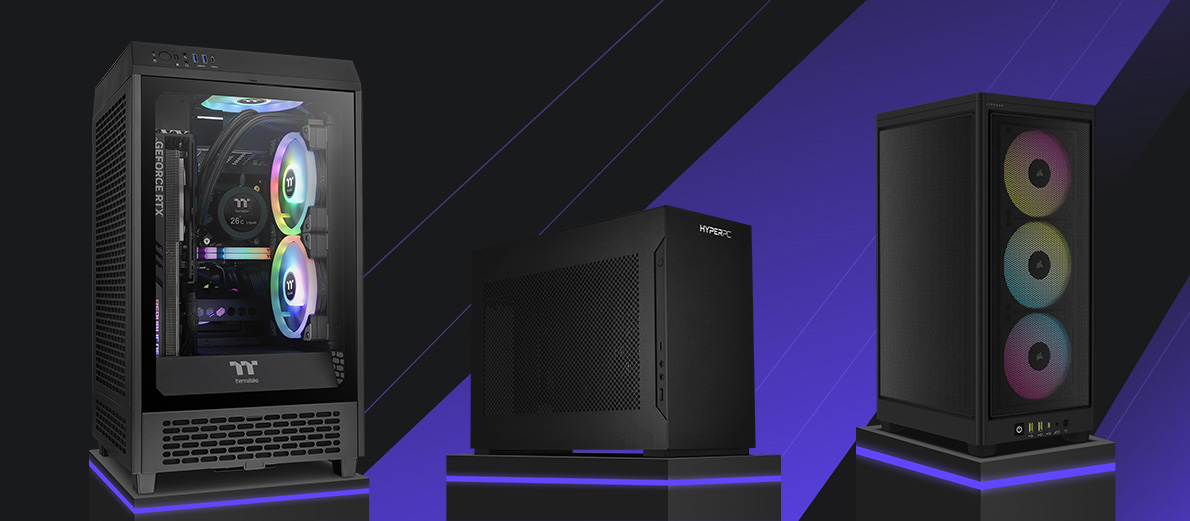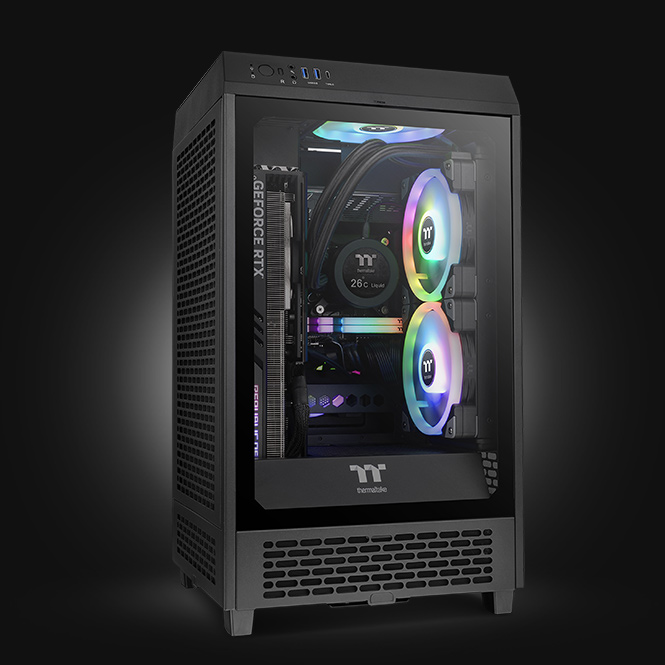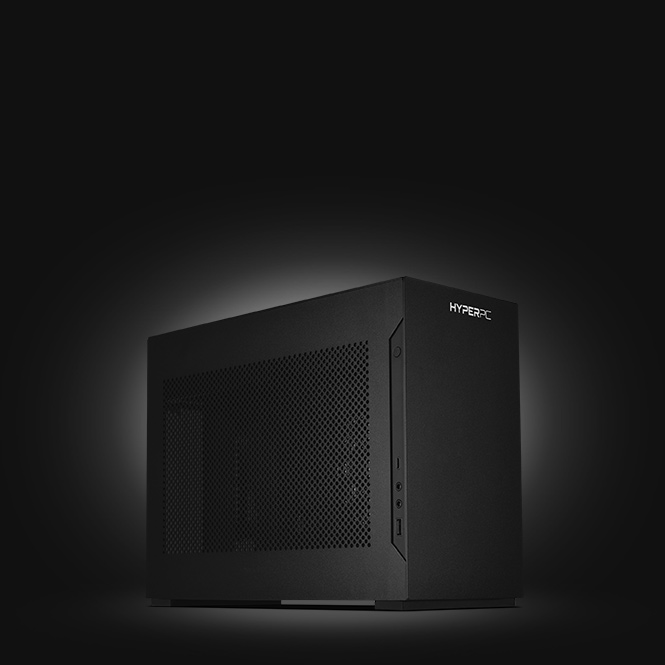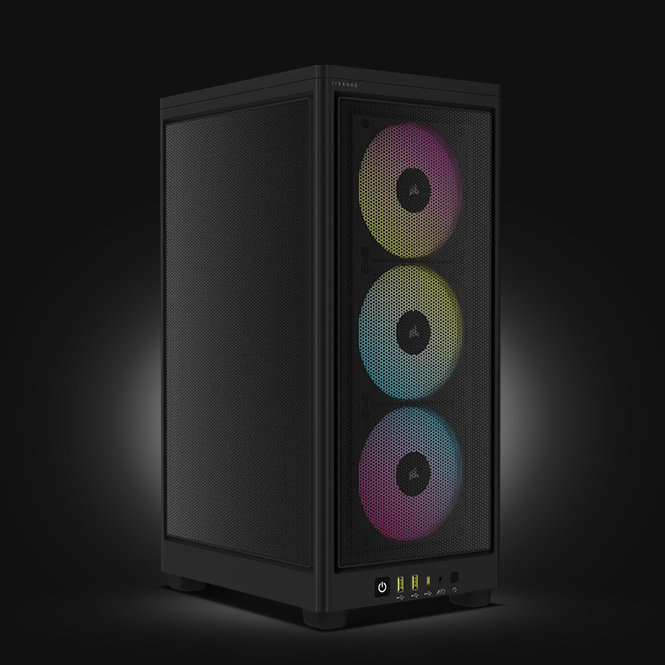
With each passing year, computer components are becoming hotter. If in the past, top processors could be cooled with good tower coolers, today they require bulky liquid cooling systems. The same goes for graphics cards. Previously, top GPUs had small radiators. Graphics cards took up only 2 expansion slots and could fit even in small cases. But today, GPU cooling systems are huge, and top cards occupy at least 4 expansion slots.
It might seem that under these conditions, assembling a performance and portable computer is simply impossible, but in reality, this is not the case. If you approach the design of the cooling system wisely, you can easily create a performance PC in a small form factor.
Today, we will talk about the design features of such computers, explain why they are unpopular, and list the best mini PCs in our opinion.
What's special about small computers
In addition to their size, mini PCs differ from standard desktop towers by having a larger number of metal radiators and an unusual arrangement of components.
Metal radiators
In modern computers, there are many micro components, such as drivers, MOSFETs, controllers, chipsets, memory chips, and so on. During operation, they generate a lot of heat, which accelerates natural degradation – a phenomenon where the internal structure of microelectronics breaks down.
To slow down degradation and extend the lifespan of components, metal radiators are used. They attach to the hot elements via thermal paste and thermal pads. Radiators take away a large portion of the heat and dissipate it into the air.
In mini PCs, there is very little free space, and the hot components are placed close to each other. This increases heating and raises the operating temperatures of the elements.
To effectively cool the hot components, many large radiators are installed in small desktops. In standard PCs, they are rare, as there is a lot of free space in large towers. Components are located far from each other, and thus do not heat each other up. They simply do not need powerful metal radiators like in compact PCs.
Location of components
Often in small computers, the motherboard is rotated by 90 degrees. This changes the position of all components in the system. For example, if in standard PCs the graphics card is placed horizontally, then in many small ones it is vertical.
Rotating the motherboard by 90 degrees allows for better organization of air circulation inside the case. This significantly reduces the operating temperatures of the components and increases their longevity.
Of course, not all mini PCs have components installed vertically. In many compact systems, motherboards are in their standard position, but their graphics cards are installed on the reverse side and connected using a riser.
Why small computers are unpopular
The unpopularity of mini PCs is explained by their high cost and production complexity.
High price
The prices of miniature cases, motherboards, and power supply units are several times higher than their standard-size counterparts. This increases the cost of the entire PC.
Many users prefer not to overpay, hence they choose standard-size desktops. Moreover, if they ever need to purchase a compact computer, most of them would opt for a regular laptop.
Complexity of production
Not every engineer can correctly select components for a mini PC. A huge number of parameters must be taken into account, such as size and heat emission. In case of even a single mistake, assembling the computer won't be possible.
Also, not all engineers can properly organize the cooling system in a compact case. This requires special knowledge and extensive experience. Therefore, many technicians refrain from creating small computers. They are too difficult to design, which is why smallest PCs are rarely found in stores.
The best miniature computers
We have been creating gaming and professional computers for many years. Our engineers have accumulated a vast amount of experience, which allows us to create any PC, including miniature ones. We present the best compact computers from HYPERPC.
HYPERPC TERRA
The HYPERPC TERRA computers are designed for creative work and gaming in Full HD resolution. They feature a vertical design and are equipped with several case fans. This enhances the efficiency of air circulation and reduces the temperatures of components inside the system.
HYPERPC THOR
The HYPERPC THOR computers are designed for heavy professional work and gaming in 2K resolution. They are also perfectly suited for Full HD gaming at high frame rates. This is relevant for owners of monitors with high refresh rates.
The HYPERPC THOR systems have a horizontal orientation of components. That is, in them, components are positioned in the same way as in standard desktop cases.
HYPERPC ATOM
The HYPERPC ATOM computers are the best systems that can be created in compact cases. They are built on the basis of the most advanced and high-performance components, and their power is sufficient for everything, even for gaming in 4K resolution
The HYPERPC ATOM systems have a vertical orientation and are equipped with 5 case fans, making them the coolest mini PCs of our company.
Conclusion
Let's briefly list the features of small PC:
- Complexity of production;
- Presence of a large number of radiators;
- Unusual orientation of components;
- Slightly higher cost relative to standard desktops.


